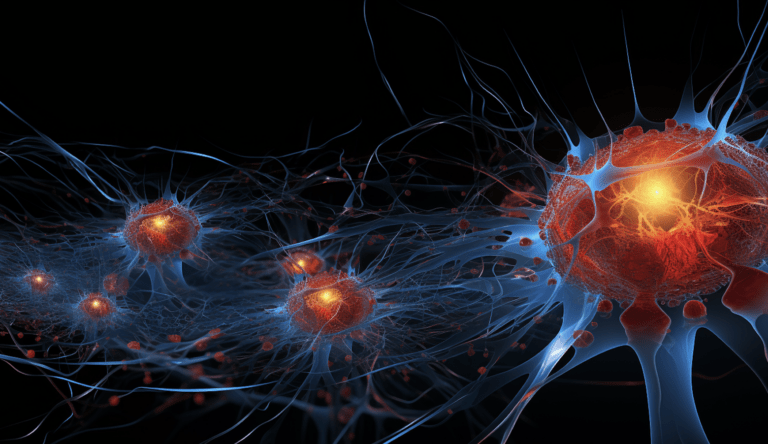Exploring In Situ Cell-Surface Proteomics
Introduction
Are you curious about in situ cell-surface proteomics and what it could mean for your life science research? Join us as we review a captivating seminar entitled “In Situ Cell-Surface Proteomics: Method Development and Applications” hosted by Sino Biological as part of their Bio Talk Tuesday seminar series. Dr. Jiefu Li, an esteemed group leader at the Howard Hughes Medical Institute Janelia Research Campus, led the webinar and offered valuable insights regarding method development in the field of cell-surface proteomics. In this blog, we’ll dig into the key takeaways from Dr. Li’s webinar and discuss potential job opportunities associated with Sino Biological and Janelia Research Campus.
Webinar Overview
The webinar focused on the significance of cell-surface molecules in different biological processes and the potential use of these molecules as drug targets. Dr. Li explored the limitations of current methods for profiling the cell-surface proteome and introduced PEELing, a novel approach for analyzing the cell-surface proteome in intact tissues. He shared PEELing’s effectiveness through examples from two notable studies conducted by his team and their collaborators.
Webinar Highlights
The importance of cell-surface proteomics
- Dr. Li emphasized that cell-surface molecules play crucial roles in the development and physiology of multicellular systems. They are essential for processes such as brain development and immune responses, making them major targets for drug discovery.
The current limitations and the need for method development
- While routinely used for profiling the cell-surfaces of cultured cells, existing proteomics methods can be physically disruptive making them insufficient for the study of intact tissues or organs. Given that the cell-surface proteome is highly dynamic and environment specific, Dr. Li highlighted the need for a method that analyzes cell-surface proteomes in native tissues.
The PEELing method
- Dr. Li introduced PEELing (proteome extraction from enzymatic labeling data), a user-centric web server for spatially resolved proteomics data analysis of intact tissues. Attendees were directed to PEELing’s web server to access this powerful wet-to-dry toolkit. PEELing facilitates data quality checks, protein localization, and annotations related to protein function and pathways.
Case studies on the use of PEELing
- To showcase the utility of PEELing, Dr. Li presented two compelling studies where they used this method to profile the cell-surface proteome, comprehensively and quantitatively, in developing brains of fruit flies and mice. In these studies, Dr. Li and his collaborators observed, at the proteome scale, how neuronal surfaces evolve during development and identified many novel molecules that are involved in regulating neural circuit assembly.
Conclusion
Dr. Li demonstrated that the PEELing method is a powerful tool for profiling the cell-surface proteome in intact tissues and has already been used to identify important molecules for neural circuit development in fruit flies and mice. PEELing will enable future proteomic discovery in native tissues and aid in future drug development.
Stay up to date on the latest biotech trends and job opportunities by subscribing to our blog!
Job Opportunities
Sino Biological As a leading reagent supplier and technical service provider, Sino Biological offers job opportunities in recombinant protein production, antibody development, and contract research services. Consider these open positions with Sino Biological.
References
Peng, Xi, et al. “PEELing: an integrated and user-centric platform for cell-surface proteomics analysis.” bioRxiv (2023): 2023-04. http://doi.org/10.1101/2023.04.21.537871
Shuster, S. Andrew, et al. “In situ cell-type-specific cell-surface proteomic profiling in mice.” Neuron 110.23 (2022): 3882-3896. http://doi.org/10.1016/j.neuron.2022.09.025
Li, Jiefu, et al. “Cell-surface proteomic profiling in the fly brain uncovers wiring regulators.” Cell 180.2 (2020): 373-386. http://doi.org/10.1016/j.cell.2019.12.029
Speaker: Dr. Jiefu Li
Group Leader Howard Hughes Medical Institute: Janelia Research Campus
Jiefu Li investigates the operating principles of cell-surface signaling in the nervous and immune systems and crosstalk between them. Cell-surface signaling mediates intercellular adhesion and communication, thus it controls nearly every aspect of the development and physiology of both systems. To obtain systemic and mechanistic insights into these operating principles, Li and his team innovate new tools and methods for quantitative proteomics and advanced imaging and analyze cell-surface signaling at systems, cellular, and molecular levels.
Dr. Jiefu Li, the webinar speaker, is a Group Leader at HHMI’s Janelia Research Campus in Ashburn, Virginia. Janelia’s research model emphasizes method and tool development that is performed by small, collaborative research groups.

